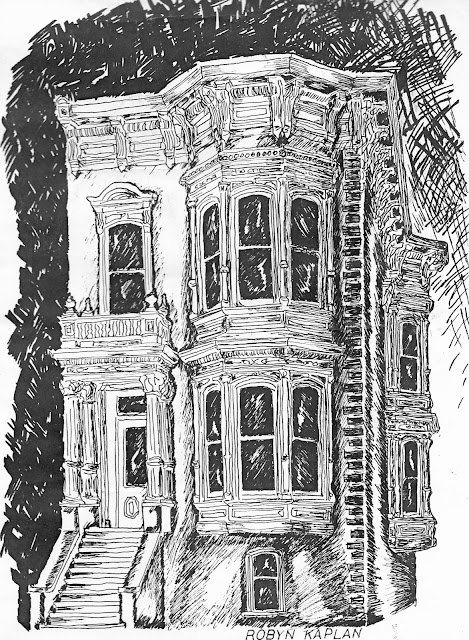All Hallows: The Old Dark House
 |
| An Old Dark House (ODH). Homage to Charles Addams. |
Something about an old, sprawling, ornate building exudes a mysterious charm for me. If I could commission any architect from history to design my ideal lair, I would instead choose Charles Addams, who, before his New Yorker cartoons were adapted for TV, made his animation debut with the title sequence of William Castle's The Old Dark House (1963).
There is a reason that the original gothic novels were typically set in castles and baronial manors, and why the trope persisted into mystery novels, horror films, and screwball comedies, before hitting their apex with Scooby Doo (which combined mystery, horror, and screwball, but also threw cold water on supernatural explanations in each episode). Old Dark Houses (ODH) act as a kind of playing field for economical story telling. There's enough narrative space for action, but enough confinement to ensure that characters don't simply go away when the peril gets intense. It's expected that there will be "normal" hidden areas like attics and basements where pivotal plot points (PPP) can be stashed. But you can also cheat--for example, hidden passages between rooms, opened by pulling a candlestick or removing the right volume of forgotten lore from the bookshelf.
So even though I don't write stories, every ODH I pass, in whatever state of repair or disrepair, always conjures a mood of story-setting for me. Even if it just turns out to be a crooked real estate deal or insurance fraud again.
 |
| The Victorian Flavel House in Astoria, Oregon, well-maintained as a historic museum and, presumably, used by kids to identify neighborhood chickens. |
 |
| A San Francisco Italianate, rendered spooky by its design and digital filters. |
Old is relative, of course. I recall reading Herbert Asbury's description of the crumbling "old brewery" in Gangs of New York and thinking, 'how old could it be?' It had only stood for 40 years by the time it was being used as a squat in the Five Points neighborhood in the 1830s. But as any homeowner or superintendent knows, if you get behind in the maintenance, a place can go to seed pretty quickly. And then the rambling halls, towering columns, and finely carved gables that once lent a place a charming frisson veers into creepy territory.
Nor do "old" houses take long to accumulate their own dark stories--sometimes factual, sometimes folkloric, sometimes a mix of both--that can add to the spook factor. I'd go so far as to say that "haunted" and "tragic" are probably the most common types of stories that get attached to old buildings (with the exceptions of homes preserved as the birthplaces of famous people, or buildings of architectural significance; but those don't fit my very thin thesis, so like an economist, we'll assume them away for the sake of conceptual elegance).
The Whittier mansion in Pacific Heights, San Francisco, provides a great example. When I passed by it last in 2022, it looked badly in need of exterior maintenance. What paint it had left was faded and peeling, while the stonework and (doric? ionic?) columns holding up the portico seemed to have their details rubbed away by generations of winds and foggy, salt air. Superficially, it would have made an outstanding haunted house in any neighborhood in America. But the house also carries numerous tales of family tragedy from its construction in the 1890s, and served as housing for Third Reich diplomats on the eve of the Second World War. Nazis or ghosts would make any home's history ripe for spooky stories. Both, combined with a dilapidated curb appeal in a very wealthy neighborhood, is Halloween gold.
 |
| Whittier Mansion, Pacific Heights, San Francisco |
A WWII connection adds heartbreak to at least one other coastal California ODH, the Redman-Hirahara farmstead in Watsonville. The Hirahara family owned the property in 1942 when they were removed to an internment camp in Arkansas under Executive Order 9066. Their attorney managed to retain ownership of the home for them during their internment. Upon their return after the war, the family lived in the home and farmed the surrounding acres until 1989, when the house was abandoned. To see the once grand Queen Anne estate in its current disrepair not only adds a dash of gothic ambience to the nearby berry fields and fruit packing plants, but drives home just how quickly the elements, animals, and (one assumes) the occasional vandal can render a building ghostworthy.
 |
| The Redman-Hirahara farmstead, Watsonville |
On the other hand, any old dump where Dracula lives will always be creepy.
 |
| Hayes Valley, San Francisco |



Comments
Post a Comment